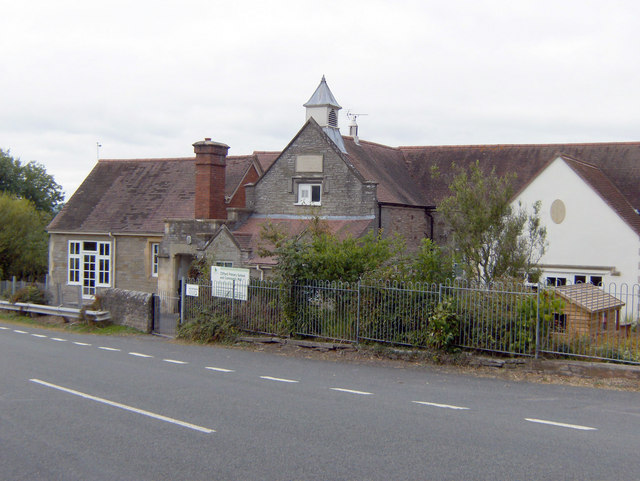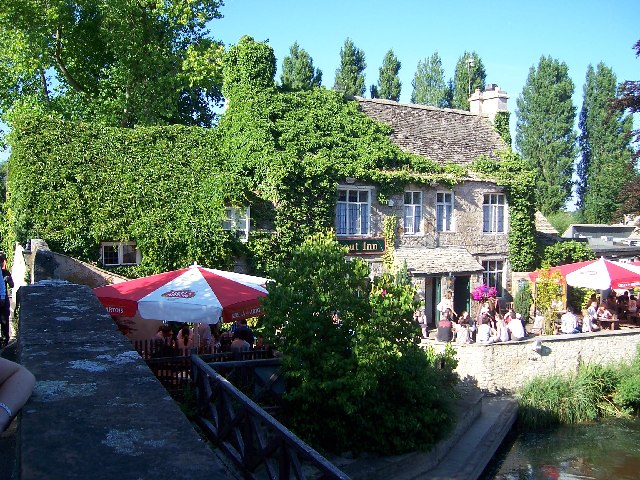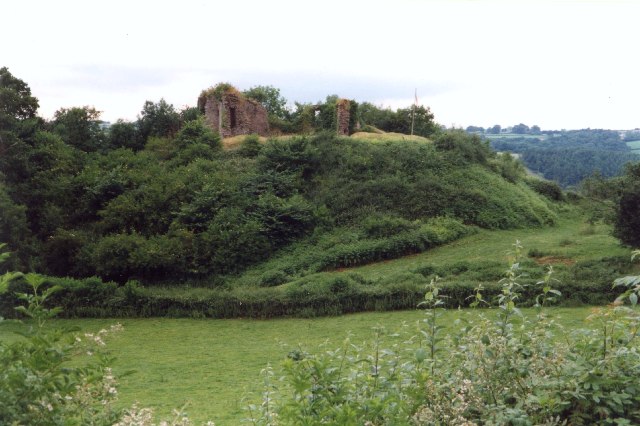|
Clifford Castle
Clifford Castle is a ruined castle in the village of Clifford which lies 2.5 miles to the north-east of Hay-on-Wye in the Wye Valley in Herefordshire, England (). It was the ''caput'' of the feudal barony of Clifford, a Marcher Lordship (owing allegiance directly to the king, but separate from the rest of the kingdom). The castle stands in the grounds of a private house and is only open to the public on certain days of the year. History The early motte-and-bailey castle was built on a cliff overlooking a ford on the River Wye in 1070 by William FitzOsbern, 1st Earl of Hereford, on a wasteland formerly occupied by Browning. The castle was intended to provide protection for a planned Norman settlement above the River Wye of quite a substantial size, with around 200 plots being intended, running uphill for half a mile towards Llanfair, where the church was sited on the hilltop. St Mary's church remains today, much altered in the Victorian era. The position of the castle as adjacent ... [...More Info...] [...Related Items...] OR: [Wikipedia] [Google] [Baidu] |
Clifford, Herefordshire
Clifford is a village and civil parish in Herefordshire, England, and to the north of Hay-on-Wye. It lies on the south bank of the River Wye, which here forms the border between Wales and England. The village sits on the B4350 road. The civil parish includes the hamlets of Priory Wood and Hardwicke. History In the 1870s, Clifford was described as: Adventure and romance novelist Rafael Sabatini, whose works include '' Captain Blood'', ''The Sea Hawk'' and ''Scaramouche'', several of which were adapted to movies, lived in Clifford from 1931. Landmarks The ruins of the Norman castle of Clifford Castle Clifford Castle is a ruined castle in the village of Clifford which lies 2.5 miles to the north-east of Hay-on-Wye in the Wye Valley in Herefordshire, England (). It was the ''caput'' of the feudal barony of Clifford, a Marcher Lordship (owing a ... are in the village. The castle is a "traditional motte and bailey castle" which stands next to the River Wye on the border b ... [...More Info...] [...Related Items...] OR: [Wikipedia] [Google] [Baidu] |
Roger De Breteuil, 2nd Earl Of Hereford
Roger de Breteuil, 2nd Earl of Hereford (1056 – after 1087), succeeded in 1071 to the earldom of Hereford and the English estate of his father, William Fitz-Osbern. He is known to history for his role in the Revolt of the Earls. Revolt of the Earls Roger did not keep on good terms with William the Conqueror, and in 1075, disregarding William's prohibition, Roger married his sister Emma to Ralph Guader, Earl of Norfolk. Immediately afterwards, the two earls rebelled. Roger, who was to bring his force from the west to join forces with those of the Earl of Norfolk, was held in check at the River Severn by the Worcestershire fyrd, which the English Bishop Wulfstan, Walter de Lacy, and other Normans. Roger had been as close 'as a son' to Archbishop Lanfranc of Canterbury, who sent him a number of missives deploring him to cease his actions; these were ignored, and Roger was excommunicated. Trial, sentence, and reprieve On the collapse of their rebellion uprising, Roger wa ... [...More Info...] [...Related Items...] OR: [Wikipedia] [Google] [Baidu] |
Second Barons' War
The Second Barons' War (1264–1267) was a civil war in England between the forces of a number of barons led by Simon de Montfort against the royalist forces of King Henry III, led initially by the king himself and later by his son, the future King Edward I. The barons sought to force the king to rule with a council of barons, rather than through his favourites. The war also involved a series of massacres of Jews by de Montfort's supporters, including his sons Henry and Simon, in attacks aimed at seizing and destroying evidence of baronial debts. To bolster the initial success of his baronial regime, de Montfort sought to broaden the social foundations of parliament by extending the franchise to the commons for the first time. However, after a rule of just over a year, de Montfort was killed by forces loyal to the king at the Battle of Evesham. Causes The reign of Henry III is most remembered for the constitutional crisis in this period of civil strife, which was provoked o ... [...More Info...] [...Related Items...] OR: [Wikipedia] [Google] [Baidu] |
William Longespée, 3rd Earl Of Salisbury
William Longespée, 3rd Earl of Salisbury (born in or before 11677 March 1226) ("Long Sword", Latinised to ''de Longa Spatha'') was an Anglo-Norman nobleman, primarily remembered for his command of the English forces at the Battle of Damme and for remaining loyal to his half-brother, King John. His nickname "Longespée" is generally taken as a reference to his great physical height and the oversize weapons that he used. Early life William was an illegitimate son of Henry II, King of England. His mother was unknown for many years until the discovery of a charter William made that mentions "''Comitissa Ida, mater mea''" (Countess Ida, my mother). This referred to Ida de Tosny, a member of the prominent Tosny (or Toesny) family, who had married Roger Bigod, 2nd Earl of Norfolk in 1181. King Henry acknowledged William as his son and gave him the honour of Appleby, Lincolnshire, in 1188. Eight years later, his half brother King Richard I married him to a great heiress, Ela of S ... [...More Info...] [...Related Items...] OR: [Wikipedia] [Google] [Baidu] |
Seal (emblem)
A seal is a device for making an impression in Sealing wax, wax, clay, paper, or some other medium, including an embossment on paper, and is also the impression thus made. The original purpose was to authenticate a document, or to prevent interference with a package or envelope by applying a seal which had to be broken to open the container (hence the modern English verb "to seal", which implies secure closing without an actual wax seal). The seal-making device is also referred to as the seal ''matrix'' or ''die''; the imprint it creates as the seal impression (or, more rarely, the ''sealing''). If the impression is made purely as a relief resulting from the greater pressure on the paper where the high parts of the matrix touch, the seal is known as a ''dry seal''; in other cases ink or another liquid or liquefied medium is used, in another color than the paper. In most traditional forms of dry seal the design on the seal matrix is in Intaglio (sculpture), intaglio (cut below th ... [...More Info...] [...Related Items...] OR: [Wikipedia] [Google] [Baidu] |
Llywelyn Ab Iorwerth
Llywelyn the Great ( cy, Llywelyn Fawr, ; full name Llywelyn mab Iorwerth; c. 117311 April 1240) was a King of Gwynedd in north Wales and eventually " Prince of the Welsh" (in 1228) and "Prince of Wales" (in 1240). By a combination of war and diplomacy he dominated Wales for 45 years. During Llywelyn's childhood, Gwynedd was ruled by two of his uncles, who split the kingdom between them, following the death of Llywelyn's grandfather, Owain Gwynedd, in 1170. Llywelyn had a strong claim to be the legitimate ruler and began a campaign to win power at an early age. He was sole ruler of Gwynedd by 1200 and made a treaty with King John of England that year. Llywelyn's relations with John remained good for the next ten years. He married John's natural daughter Joan in 1205, and when John arrested Gwenwynwyn of Powys in 1208, Llywelyn took the opportunity to annex southern Powys. In 1210, relations deteriorated, and John invaded Gwynedd in 1211. Llywelyn was forced to seek terms and to ... [...More Info...] [...Related Items...] OR: [Wikipedia] [Google] [Baidu] |
Henry III Of England
Henry III (1 October 1207 – 16 November 1272), also known as Henry of Winchester, was King of England, Lord of Ireland, and Duke of Aquitaine from 1216 until his death in 1272. The son of King John and Isabella of Angoulême, Henry assumed the throne when he was only nine in the middle of the First Barons' War. Cardinal Guala Bicchieri declared the war against the rebel barons to be a religious crusade and Henry's forces, led by William Marshal, defeated the rebels at the battles of Lincoln and Sandwich in 1217. Henry promised to abide by the Great Charter of 1225, a later version of the 1215 '' Magna Carta'', which limited royal power and protected the rights of the major barons. His early rule was dominated first by Hubert de Burgh and then Peter des Roches, who re-established royal authority after the war. In 1230, the King attempted to reconquer the provinces of France that had once belonged to his father, but the invasion was a debacle. A revolt led by William ... [...More Info...] [...Related Items...] OR: [Wikipedia] [Google] [Baidu] |
Walter De Clifford (died 1263)
Walter de Clifford (died 1263) feudal baron of Clifford in Herefordshire, was a Welsh Marcher Lord during the reign of King John (1199–1216). Family Walter de Clifford was born before 1190, the son of Walter de Clifford (died 1221) and Agnes Cundy (de Condet). He died before 20 December 1263. He had at least four brothers, Roger, Giles, Richard and Simon, as well as sisters, Maud, Basilia and Cecilia. History He took over Clifford barony in 1208 on the disgrace of his father, who appeared disloyal to King John of England who was then in dispute with Walter's lord for Bronllys, William de Braose, 4th Lord of Bramber. Walter's first marriage proved barren and he married Margaret, the daughter of Prince Llywelyn ab Iorwerth, late in life during 1232 following the accidental death of her first husband, John de Braose. During baronial discontent he rebelled against King Henry III in 1233 and surrendered after Clifford Castle had been reduced by the king. He then joined the kin ... [...More Info...] [...Related Items...] OR: [Wikipedia] [Google] [Baidu] |
Godstow
Godstow is about northwest of the centre of Oxford. It lies on the banks of the River Thames between the villages of Wolvercote to the east and Wytham to the west. The ruins of Godstow Abbey, also known as Godstow Nunnery, are here. A bridge spans the Thames and the Trout Inn is at the foot of the bridge across the river from the abbey ruins. There is also a weir and Godstow lock. History Godstow Abbey (see detailed history below) was built here, starting in 1133. It housed an order of Benedictine nuns. Rosamund Clifford, the mistress of King Henry II, retired here and died at 30 in about 1177. Her grave is somewhere in the grounds but now lost. The abbey was suppressed in 1539 under the Second Act of Dissolution. The abbey was then converted into Godstow House by George Owen. It was occupied by his family until 1645, when the building was badly damaged in the English Civil War. After this damage, the building fell into disrepair and was used by the locals as a source of ston ... [...More Info...] [...Related Items...] OR: [Wikipedia] [Google] [Baidu] |
Henry II Of England
Henry II (5 March 1133 – 6 July 1189), also known as Henry Curtmantle (french: link=no, Court-manteau), Henry FitzEmpress, or Henry Plantagenet, was King of England from 1154 until his death in 1189, and as such, was the first Angevin king of England. King Louis VII of France made him Duke of Normandy in 1150. Henry became Count of Anjou and Maine upon the death of his father, Count Geoffrey V, in 1151. His marriage in 1152 to Eleanor of Aquitaine, former spouse of Louis VII, made him Duke of Aquitaine. He became Count of Nantes by treaty in 1158. Before he was 40, he controlled England; large parts of Wales; the eastern half of Ireland; and the western half of France, an area that was later called the Angevin Empire. At various times, Henry also partially controlled Scotland and the Duchy of Brittany. Henry became politically involved by the age of 14 in the efforts of his mother Matilda, daughter of Henry I of England, to claim the English throne, then occupied b ... [...More Info...] [...Related Items...] OR: [Wikipedia] [Google] [Baidu] |
Rosamund Clifford
Rosamund Clifford (before 1150 – ), often called "The Fair Rosamund" or "Rose of the World" (Latin: ''rosa mundi''), was a medieval English noblewoman and mistress of Henry II, King of England, who became famous in English folklore. Life Early life Rosamund Clifford, born before 1150, is usually assumed to have been the daughter of Walter de Clifford (born Walter FitzRichard; 1113–1190), a Marcher Lord, and his wife Margaret. He gained his surname from his major holding, Clifford Castle in Herefordshire, where he was first steward then lord. She had three brothers, Walter (circa 1160–1221), Richard and Gilbert, and two sisters: Amice, who married Osbern FitzHugh of Richard's Castle, Herefordshire and Lucy, wife of Hugh de Say of Stokesay, Shropshire. Her name likely came from the Latin phrase ''rosa mundi'', meaning "rose of the world." Clifford was first raised at her father's Clifford Castle, then sent to a convent of Benedictine nuns in Godstow Abbey for educ ... [...More Info...] [...Related Items...] OR: [Wikipedia] [Google] [Baidu] |
Walter De Clifford (died 1190)
Walter de Clifford (1113–1190) (known before the 1130s as Walter FitzRichard) was an Anglo-Norman Marcher Lord of Bronllys Castle on the Welsh border, and was feudal baron of Clifford, seated at Clifford Castle in Herefordshire. Life According to Eyton, he succeeded to the estates of his uncles Walter and Drogo. These two brothers figure in the Domesday Book of 1086 as the possessors of lands in Herefordshire, Berkshire, and other counties. His father Richard seems to have died between 1115 and 1138, in which latter year we find 'Walter de Cliffort' signing a Gloucester charter. He reappears under the same name in 1155. He probably obtained the barony of Clifford from his wife Margaret, asserted to be the daughter of Raoul IV de Conches and thus the granddaughter of Raoul II of Tosny, feudal lord of Flamstead, who is shown, in 1086, as 'tenant-in-chief' of this fee, the multiple lords being listed as Drogo (son of Poyntz); Gilbert (son of Turold); Herbert; and Roger. (A se ... [...More Info...] [...Related Items...] OR: [Wikipedia] [Google] [Baidu] |



.jpg)



